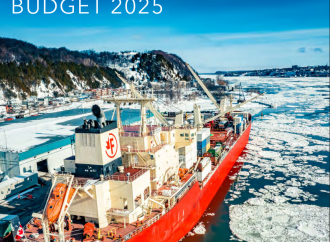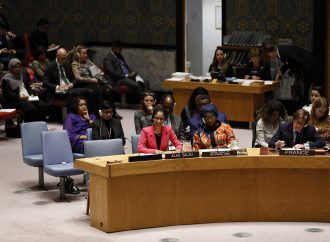With the financial losses of climate change increasing by the year, claims made to the insurance sector have followed suit. This has both driven up premiums across the sector but, more importantly, revealed how many assets are uninsured against climate change. Yet in the knowledge of the problems posed by climate risk, the insurance sector appears practically ignorant.
In 2023, one of the world’s largest reinsurance companies MunichRE estimated that insured losses related to natural disasters amounted to $250bn. Under the broad category of natural disasters, thunderstorms account for the biggest impact followed by earthquakes. These are known as peak-perils in the language of the insurance sector for the significant losses they incur.
At the same time, climate change has led to the emergence of non-peak perils, which are flash floods, wildfires or hailstorms. Take, for example, the January 2025 wildfires in Los Angeles (LA), USA that are now considered to have resulted in anything between $40bn and $250bn worth of losses. This year’s wildfires are just the most recent of frequent such instances in California, though they now incur losses like Hurricane Katrina in 2005. Once again, they have revealed how few customers are insured against the worst outcomes, but also push up future premiums for events which climate scientists predict will happen with ever greater frequency. These escalating climate-related risks signify the fallibility of insurance strategies of pooling risk. Yet, as the case of the LA fires has come to show, insurance companies are, unlike their customers, not only often protected against the worst impacts through their access to the financial means of governments to minimise their own costs.
Insurers are, of course, not blind to the fact that climate change is no longer a future event, but something that impacts policyholders in the here and now. As a result, they have attempted to incorporate climate risks into the actual techniques that they use to predict the risk of future events. Famously, the insurance sector is said to claim that such techniques are able to predict risk apart from those that occur as ‘acts of god’. The financial cost they attach to this risk results in the insurance premiums we all must pay to cover our assets. Typically, the total financial cost insurers attribute to the risk is amortised across a payment term, though so many caveats can apply across the world that insurance products are often atypical. Nonetheless, insurers themselves seek to cover themselves with re-insurers, who are similarly considering future products in the context of climate change.
Although developing ever greater and more granular knowledge of climate risks, the sector finds itself confronted with uncomfortable knowledge. As the Institute and Faculty of Actuaries (IFoA), who claim to provide ‘Thought Leadership’ for the sector, has found climate risks do not fit into typical actuarial techniques for they rely too heavily on past data to calculate future costs. These problems also manifest in the modelling of the insurance sector, in which future threats are calculated on the basis of historical trends, and further complicated by contestable assumptions and interpretations.
An almost dizzying array of models are used within the insurance sector, including Integrated Assessment Models (IAMs), Chronic climate impact models, earth system models, acute climate impact models and Natural Catastrophe (NatCat) models. Notwithstanding the technical issues of relying on models, a critique that is similarly levelled at other financial institutions, the insurance sector appears confident that climate risks are adequately factored into their operations. Based on these models, insurance companies then determine their investment portfolio decisions, a feature of the sector that is often overlooked.
As such, the insurance sector could be considered to indulge in what Best calls ‘practical ignorance’, defined as:
‘mobilizing ignorance in ways that can be quite useful by, for example, allowing policymakers to discount uncomfortable evidence, or avoid responsibility for failure, or reflect more critically on how to develop policy in the absence of complete knowledge’.
When observing our data through the lens of practical ignorance, we find several associated issues with the way the insurance sector approaches the subject of climate risk. We accordingly found the following three stage process that suggests climate risks are likely to arise further in the future.
The first is a marketplace of models in which every company is producing, commissioning or acquiring their own model. This raises questions over the reliability of any one model but obviously implies that many are wrong. Second, insurance companies have faith that they will be swiftly able to diversify and shift their portfolios away from climate risk whenever necessary. Finally, competitive imperative within the sector has disincentivised any dramatic alterations to existing pricing and operation, for everyone’s annual earnings, quarterly performance and bonuses are linked to ensuring short-term profitability and market share. Perhaps more importantly, it also appears that if climate-related financial risks became systemic risks to the financial system as a whole, history shows governments would step in to bail them out. The spectre of moral hazard appears to be a cause of practical ignorance.
This research is co-authored with Dan Bailey, a Senior Lecturer in International Political Economy at Manchester Metropolitan University.









